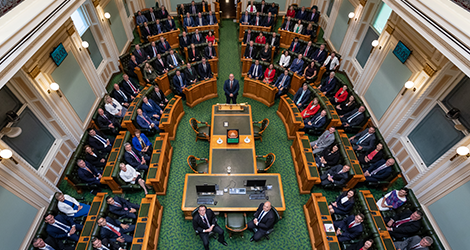The Government is using technology, data and analytics to improve peoples’ experiences with digital government services through a digital by design approach.
The Data and Digital Strategy sets the 2030 vision to ‘deliver simple, secure and connected public services, for all people and business, through world class data and digital capabilities.’ Digital government services work best when they are easy to use.
The 2024 update to the Data and Digital Government Strategy’s Implementation plan builds on a strong foundation of work under the mission to deliver ‘Simple and seamless service’, with some great digital by design initiatives launched over the past year. These include Digital Commonwealth Statutory Declarations, Digital Pharmaceutical Benefits Scheme Authorities, and Digital ID, among many more.
Optimising services through a digital by design approach
‘Digital by design means planning for digital transformation from the beginning of a project, explains Ramsey Beydoun, Acting Head of Strategy, Planning and Performance Division at the DTA.
‘Government services that are digital by design are optimised for digital engagement and can anticipate people’s needs.’
To make it simpler for people to submit and monitor their passport application, the Department of Foreign Affairs and Trade is replacing its legacy systems and uplifting its digital infrastructure.
Similarly, people can now easily complete statutory declarations through myGov for things like superannuation to insurance claims. Whether people are in urban or remote areas, making statutory declarations online makes the process easier for everyone.
The Department of Veterans’ Affairs (DVA) is modernising its ICT ecosystem to support the health and wellbeing of veterans and their families. The project will update the case management system for Open Arms, the Department’s counselling service for veterans and their families.
This initiative relates to Recommendation 3 of the interim report by the Royal Commission into Defence and Veteran Suicide. This recommendation sought to improve the administration of the claims system. The interim report hoped any changes would improve veterans’ experience of the claims system, remove complexity from the system, and enhance efficiency in claims processing.
Scalable architecture to support data sharing
‘Scalable architecture is key to seamless digital government,’ outlines Mr Beydoun. “It makes systems flexible and responsive.’
‘The Government is building systems and infrastructure to support data discoverability, access, sharing, integration and analytics.’
There has already been significant progress in the development of the Australian │į╣Ž═°šŠ Data Integration Infrastructure (ANDII) and increasing participation in the DATA Scheme.
The ANDII is a cloud-based ICT solution that connects datasets from across the country to support the │į╣Ž═°šŠ Disability Data Asset. It was created in partnership between the Australian Bureau of Statistics, the Australian Institute of Health and Welfare and the Department of Social Services.
With its seamless and secure data integration capabilities, the ANDII will help researchers and analysts generate data-driven insights and positive policy outcomes for all Australians.
‘Tell us once’ is reducing digital red tape for everyone
Government is investing in major pieces of work to facilitate a ‘tell us once’ data and digital ecosystem.
Digital ID is one of the Government’s biggest milestones in digital for 2024, with the Digital ID Act coming into effect on 1 December. Digital ID is a simpler, safer, and inclusive way for people to confirm their identity online, without the need to use physical documents, and reduces the need for businesses to store personal information.
‘People can sometimes find the process of dealing with different parts of government time consuming and repetitive,’ emphasises Mr Beydoun. ‘This is especially true when they have experienced a major life change, like the birth of a child.’
Birth of a Child, a redesign of the Life Events program, is truly a look to the future of seamless and simple government services. It is a cross-jurisdictional effort between the ACT, Queensland, and federal governments (through Services Australia).
The program delivers relevant services to mothers who opt-in and give birth at a participating hospital, helping new parents interacting with government services after the birth of a child. It does this by streamlining services and sharing of information to agencies such as Medicare, Centrelink and Registry of Birth, Deaths and Marriages, simplifying what can be a stressful experience.
Joining up information and making it available across the APS will reduce the administrative burden people and business face when engaging with different parts of the Government.
Conclusion
These projects are examples of how simple and seamless services make things easier for every user. Initiatives – like Birth of a Child and Digital ID – stand out for their ability to meet users’ needs in a way that is seamless and responsive. The Government is investing in back-end services, ensuring that our systems have the capacity and capability to support those seamless and responsive front-end services.
A Simple and seamless data and digital government depends on both sides of this equation working effectively.
The 2024 Implementation Plan demonstrates how agencies across government are putting in the work to deliver data-driven digital solutions for all people and business, simply and seamlessly.







